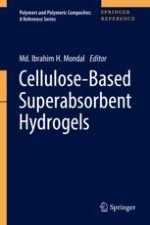2019 | OriginalPaper | Buchkapitel
30. Cellulose-Based Absorbents for Oil Contaminant Removal
verfasst von : Wang Liao, Yu-Zhong Wang
Erschienen in: Cellulose-Based Superabsorbent Hydrogels
Aktivieren Sie unsere intelligente Suche, um passende Fachinhalte oder Patente zu finden.
Wählen Sie Textabschnitte aus um mit Künstlicher Intelligenz passenden Patente zu finden. powered by
Markieren Sie Textabschnitte, um KI-gestützt weitere passende Inhalte zu finden. powered by
